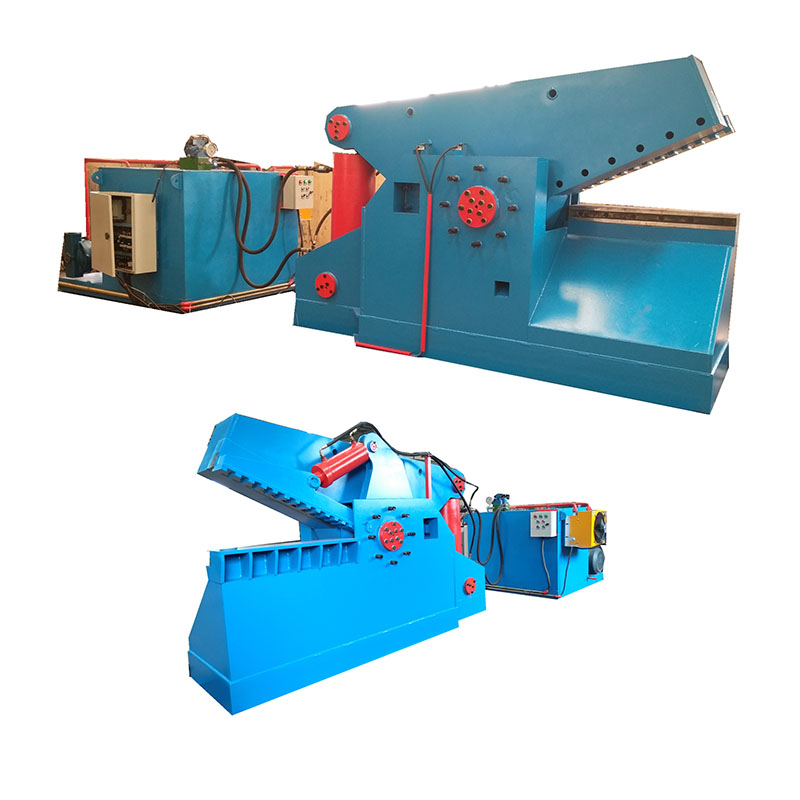
Oct . 05, 2025 23:30 Back to list
If you work around scrap, you already know Metal Balers are the quiet heroes of throughput. I’ve toured yards from Baoding to Bangkok, and, to be honest, the biggest shift isn’t just raw tonnage—it’s smarter hydraulics, safer controls, and bale consistency that downstream furnaces actually love.

Built in Dafu Village, Qingyuan Town, Qingyuan District, Baoding City, Hebei Province, Metal Balers from this region are aimed at steel plants, recycling companies, and non‑ferrous smelters. Typical feedstock: steel offcuts, turnings, copper and aluminum profiles, stainless trim, even end‑of‑life car shells. The mission is simple: compress to furnace‑ready charges, reduce transport costs, and increase melt shop speed.
Materials arrive sorted by alloy family (or close enough). Operators load the chamber via grapple or conveyors; the machine executes a pre‑compress, main compression (horizontal/three‑ram depending on model), then ejects tied or untied bales. QC teams spot‑check bale density (≈1.2–2.5 t/m³ depending on alloy and contamination). Hydrostatic tests at 1.5× rated pressure (ISO 4413 guidance), cycle‑time validation (10–60 s range), and functional safety checks per EN 60204‑1 are the norm in better shops. With routine maintenance, service life lands around 8–12 years—longer if oil cleanliness is kept under ISO 4406 18/16/13, which, surprisingly, many yards now track.
| Model | Press Force | Bale Size (L×W×H) | Cycle Time | Motor Power | Density |
|---|---|---|---|---|---|
| HB-250 | ≈250 t | 600×400×300 mm | 40–60 s | 22–30 kW | 1.2–1.6 t/m³ |
| HB-630 | ≈630 t | 800×600×400 mm | 25–40 s | 45–75 kW | 1.6–2.2 t/m³ |
| HB-1000 | ≈1000 t | 1000×800×500 mm | 18–30 s | 90–132 kW | 2.0–2.5 t/m³ |
Notes: real‑world use may vary with alloy, moisture, and loading method. Noise can be kept ≈78–85 dB(A) measured near operator station (ISO 11201), which is decent.
| Vendor | Range | Controls | Certs | After‑Sales |
|---|---|---|---|---|
| OW Recycling (Metal Balers) | 250–1000 t | PLC + HMI, telemetry optional | ISO 9001, CE (EN 16500) | On‑site install, 24/7 hotline |
| Vendor A | 200–800 t | Basic PLC | CE | Regional partners |
| Vendor B | 400–1200 t | PLC + remote diagnostics | ISO 9001, CE | Global field teams |
Common options: bale size, press force, wear‑plate thickness (HARDOX liners), 380/400/460 V motors, oil heaters/coolers, remote monitoring, and paint schemes. Safety interlocks, e‑stops, lockout points, and guarded ejection tracks should align with EN 16500 and EN 60204‑1. I guess the yards that invest in better guarding see fewer lost‑time incidents—no surprise there.

A Hebei recycler running a 630‑ton unit reported 18% transport savings after density improved; melt shop also shaved ~6 minutes per heat due to cleaner, consistent charge. Operators liked the HMI diagnostics—many customers say “it just makes troubleshooting less scary.” Noise was measured around 82 dB(A) near the loading side; acceptable with ear protection.
Metal Balers turn chaotic scrap streams into predictable inventory. That predictability—plus safer, standards‑based design—pays off in logistics, furnace efficiency, and honestly, fewer headaches on Monday mornings.
Latest news
Efficient Double Shaft Shredder Machines for Sustainable Waste Management
NewsNov.20,2025
Understanding What is the Principle of Hammer Mill - Global Applications & Innovations
NewsNov.19,2025
Vertical Hammer Crusher: Efficiency and Sustainability in Modern Crushing
NewsNov.19,2025
Small Hammer Crushers: Compact Solutions for Efficient Material Processing
NewsNov.18,2025
Mobile Hammer Crusher – Versatile Crushing Solutions for Industry & Disaster Relief
NewsNov.18,2025
Hammer Mill Glass Crusher – Efficient Glass Recycling Solutions | OW Recycling
NewsNov.18,2025